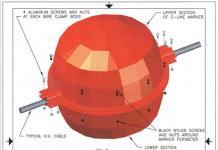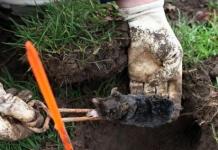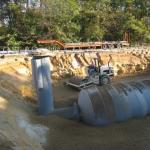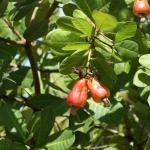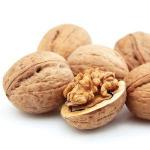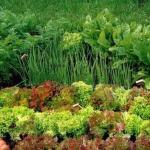Peas are an open ground vegetable crop. It is completely undemanding in terms of soil composition, cold-resistant, and is an excellent predecessor for other garden crops, which is why it is grown everywhere. If you have some free space left on your site, make a bed for green peas. It will become a source of healthy, sweet and original-tasting fruits.
Children love peas (they eat them fresh green), and peas are also used to prepare various dishes. Not only beans, but also juicy shoulder blades are used for food purposes. In addition, the annual bushes are very pretty: compact, curly, and a pleasant green color.
Planting technology (timing, preparation of seeds and soil, layout) and care will not be difficult; even a novice gardener can handle it.
Timing for planting peas in open ground
When to plant pea seeds in the ground? Spring pea sowing time: from late April to early May. To be able to harvest throughout the summer, sowing is carried out in several stages. Peas develop and grow quite quickly, so even in the middle zone you are guaranteed to reap several harvests. The planting period for peas can be extended until the end of May.
The plant is not afraid of frost - peas (young sprouts) will calmly tolerate a short-term drop in temperature to -6 °C. But you should still plant them in warm soil (the seeds will rot in damp, cold soil). The temperature can be low, but always above zero (10-12 °C). To warm up, the bed can be covered with film.
Conditions for growing peas in open ground
Choosing a location and illumination of the area
First of all, you should decide on a place to grow peas. The area should be well lit by the sun and protected from drafts and cold temperatures. When planted in shade, flowering and fruiting, accordingly, deteriorate, and the taste of the blades and fruits deteriorates. Peas are returned to the same place no earlier than after 4 years.
Feedings and predecessors
During the growth process, the crop is undesirable (this leads to an increase in green mass to the detriment of flowering and fruiting), but soil saturated with organic matter is preferable. A large amount of organic matter (compost and manure) is usually applied to tomatoes - they will be good predecessors for peas, and for other legumes. Favorable planting after pumpkin and potatoes.
Planting potatoes with peas
Often peas are grown directly in a potato field (the seeds are placed in the holes along with the tubers). This method of cultivation has both supporters and opponents. Peas will not pose any particular competition to the development of potatoes; on the contrary, they will protect the tubers from wireworms. The only thing that interferes is the treatment of potatoes against the Colorado potato beetle, after which green peas cannot be eaten. Therefore, it is possible to plant with potatoes only if the tubers are pre-treated against the pest before planting.
Preparing a site for planting peas
Preparing the land in the fall
The crop is undemanding in terms of soil nutrition. The main condition is looseness, neutral reaction of the soil. If the soil is acidic, first (in the fall) apply garden lime (250-300 g per 1 m²).
Too depleted soil should be recharged. This is best done in the fall. When digging, add humus or compost (0.5 buckets per 1 m²), 30 g of potassium nitrate and 20 g of superphosphate.
In the spring, as soon as the melt water has subsided, dig up the area again and level it.
Fertilizers for peas when planting in spring
Peas need phosphorus and potassium. If you haven’t prepared the site in the fall, when planting, they can be placed in rows according to the manufacturer’s instructions (use superphosphate, potassium nitrate).
Do I need to soak peas before planting?
Carefully inspect the planting material, sort out poor-quality ones (broken, chipped, wrinkled with spots, dots). Externally, high-quality seeds may turn out to be dummies - for subsequent testing, place them in a solution of table salt (30 g of salt per 1 liter of water). Those that have sunk to the bottom are suitable for planting. Rinse them with warm water.
Dry seeds can be used for sowing, but they will germinate faster when soaked. In any case, it is useful to disinfect the seeds: place them in a solution of boric acid for 5-7 minutes (1 g per 5 liters of water).
How to soak peas before planting
It involves two methods, with slight variations. Choose what is more convenient and more acceptable for you.
How long should I soak peas before planting? Soaking in a bowl
- Spread the seeds, pour warm water so that they are completely covered, but no more.
- The soaking process lasts about 6-10 hours.
- It is not advisable to overexpose the planting material: if bubbles come from the seeds, it means that the sprouts in some of them have died.
- It is better to soak it overnight and start sowing in the morning.
How to prepare peas for planting even faster Warming up in a thermos
The temperature should be approximately 45 °C. Place the seeds in a thermos and leave for 3 hours. During this time they will be saturated with water and swell.
- Soaking peas before planting speeds up seed germination by 2-3 days.
- Soaking in a solution of a special preparation with bioactive substances (humate, epin) is useful, but if this is not available, ordinary water for peas is also sufficient.
- The final procedure is disinfection: place in a solution of boric acid for 5-7 minutes (1 g per 5 liters of water).
How to germinate peas for planting
Peas are strictly not recommended; pea sprouts should not be allowed to sprout before planting them in the ground, because the delicate roots will be damaged during planting and there will be no sprouts. Therefore, soak the seeds for no more than 6-10 hours and plant them immediately.
Scheme for planting peas in open ground
Single row planting scheme

After the bed is prepared (the soil is dug up and leveled), you can begin sowing. What is the distance when planting peas? The planting pattern depends on the type of plant: between the rows a distance of about 20 cm is maintained for shelling and 30 cm for sugar. The optimal distance between individual plants is 4-5 cm
For tall varieties, planting in two lines is most often used.

The distance between rows when planting peas according to this scheme:
- A distance of about 20-30 cm is maintained between the lines; a gap of 8-10 cm is required between the rows.
- The optimal distance between individual plants is 4-5 cm.
It is necessary to install supports in the garden bed; the distance between individual plants can be slightly increased. Wooden pegs are used as supports, and cords are pulled between them. The peas will cling to them with tendrils and grow better.
The depth of seed placement depends on the looseness of the soil. If the soil is light, sow to a depth of 5-6 cm; when sowing in dense clay soil, deepen it by 3-4 cm. You should not go deeper than 3 cm, since the seeds can be pecked out by birds.
For low-growing (dwarf) varieties, a different scheme is used

Dwarf peas are sown in beds according to a 15x15 cm pattern. The optimal seeding depth is 5-6 cm. The width of the bed is 0.8-1.2 m, the row spacing is 70 cm.
How to sow
In both cases, the sowing itself occurs in the same way. Make grooves 5-6 cm deep. Pour with warm water, place seeds at the bottom, sprinkle with soil on top, compact lightly. If the soil is depleted, “fill” the soil with granules of complex mineral fertilizer.
Immediately after planting, it is advisable to cover it with film for several days to further warm the soil.
Caring for peas in open ground

Weeding and loosening
Caring for pea crops comes down to timely weeding and watering. When the young plants grow a little (about 2 weeks after emergence), carefully loosen the soil and hill up.
Watering
Peas do not tolerate heat and drought - abundant watering will be required. Avoid overwatering (root rot may develop); if there is sufficient rainfall, watering will not be necessary. Apply 9-10 liters of water per 1 m², this should be especially taken care of during the period of flowering and fruiting.
After rain and watering, loosen the soil. Remove weeds regularly.
Feeding
If you take care of the nutritional value of the soil before sowing, fertilizing during the growing season will not be required. Otherwise, you should apply complex mineral fertilizer when the seedlings grow to a height of about 10 cm. You can feed them again during the flowering period.
You can enjoy the juicy fruits within a couple of weeks after flowering. To protect the plantings from birds, cover the top with a net.
Diseases and pests
Among diseases, powdery mildew can cause trouble. The plant becomes covered with a whitish coating, growth rates slow down, which significantly reduces the chances of getting a good harvest. To combat, use natural preparations: spray with infusion of field thistle (300 g of leaves per 10 liters of water, leave for 8-10 hours). After a week, repeat the treatment.
Among the pests, the greatest danger is the leaf roller or pea stalk. The caterpillars overwinter in the open ground, and in the spring they turn into adults, which lay eggs on the greenery. Caterpillars emerge from them again and eat young shoots, causing significant damage to the plantings. For prevention purposes, deep autumn digging of the site is used. Sowing is done early. Young plants should be treated with infusion of tobacco, wormwood, celandine leaves, tomato tops or burdock roots.
Harvesting
The pea harvest begins around the end of June or beginning of July. It is carried out many times as the fruits ripen. Pick off the pods very carefully so as not to damage the stems.
Hulling varieties (used to produce green peas) are harvested as the green juicy leaves finish forming and the grains reach their maximum size.
Harvesting the blades of sugar varieties begins when they become fleshy, green, juicy and tender, with underdeveloped seeds. The yield per 1 m² is about 1.5 kg.
To increase productivity, peas should be harvested daily, picking off the most suitable ones. Remove withered and overripe pods so that they do not take away the strength of the plant and do not inhibit the development of young pods.
Full harvesting is carried out when the lower pods are ripe and dry. Cut the plants, collect them in bunches and hang them in a dark, dry room with good ventilation. Collect the ripened beans and store them in an airtight glass container.
The best varieties of peas
Let's look at the best varieties of peas:
Delikata – tall variety with abundant fruiting
Sugar Ann – produces sweet juicy pods
Waverex - low growing plant
Feltham First - the variety is hardy to weather conditions and has high immunity to disease.
Early Onward is a tall bush that produces good yields and early ripening.
Varieties of domestic selection: Swift, Avala, Pegasus, Geneva, Vikma, Skinado, Salyut, Violena, Karina, Ilovetsky.
It is very difficult to imagine our garden without such tasty and... Even in the smallest area you can find a bed for this wonderful plant, fortunately it will not take up much space. But the benefits from a pea bed will be considerable, because in addition to tasty grains, peas have the ability to enrich the soil with nitrogen. And in order for peas to produce a good harvest, it is very important to correctly determine when to plant them in the ground.
Pea planting dates
Since peas are a cold-resistant crop, their sowing time comes quite early. You can start sowing peas as soon as the soil in the area thaws, and this usually happens by mid-to-late April. The main thing is to plant as soon as possible after preparing the soil. You should hurry so that the moisture accumulated in it over the winter does not have time to evaporate from the soil and the peas can germinate safely. If you sow several varieties of peas at different stages of ripeness at the same time, you will be able to enjoy the harvest throughout almost the entire summer.
Arranging a garden at the dacha involves growing numerous vegetables, fresh herbs, and berries.
Making optimal use of its space is a skill that not everyone has. For example, planting peas will not only diversify the assortment, but also, due to their biological characteristics, peas will not take up much space.
Therefore, you should not deny yourself the opportunity to grow the familiar green pods.
By fulfilling all the requirements for agricultural technology, you will get a wonderful vegetable plant from which you can prepare a lot of tasty and healthy dishes.
Biological features, popular varieties
Peas come from the legume family. This is a herbaceous annual plant with a hollow stem that branches and clings to vertical supports with tendrils. The height of the plant, depending on the variety, ranges from 15 cm to 2.5 m. The flowers are mostly white or purple, moth-shaped.
There are two types of fruits:
- peeling type – have inedible valves due to the presence of a hard parchment layer (varieties Early Gribovsky 11, Kubanets 1126, Early 301. Vegetable 76, Alpha, Excellent 240, Viola, Yubileiny 1512, Late-ripening brain, Belladonna 136 and others);
- sugar type – there is no parchment layer, so the entire pod is eaten (varieties Zhegalova 112, Inexhaustible 195).
The first type is suitable for canning, the second is used in the preparation of salads and soups.
This plant is resistant to cold, but the temperature optimum is 16-20’ C. A distinctive feature of vegetable peas is the ability to absorb atmospheric nitrogen.
Peas are also demanding on soil moisture and can only withstand short-term drought. Thanks to its developed tap root system, it can extract water from deep layers of the soil.
Peas contain protein, fiber, sugar, and starch. Also rich in lysine (amino acid), vitamins B, PP, A, ascorbic acid. However, people suffering from flatulence should consume this vegetable with extreme caution.
In addition to its utilitarian purpose, peas will decorate your ornamental garden, because its green stems with twisting tendrils and beautiful flowers look like a ball of decorative wire, which looks very original.
How to plant peas?
Crop rotation in the garden is a prerequisite for obtaining a good harvest for many years. Therefore, peas grow best in place of cucumbers, cabbage, tomatoes, potatoes, and perennial herbs. After 4 years it can be returned to the chosen location.

The soil should be cultivated, well fertilized, light loamy or sandy loam. On another type of soil the plant will also grow, but it will be depressed and the harvest will be meager. Acidic soil with a high salt content and high groundwater is unsuitable.
Place for growing peas in the country It is better to choose a sunny, open or slightly shaded location. Before planting, it is necessary to till the soil. The bed is dug up, loosened and leveled.
The plant does not remove many nutrients from the ground, so if the soil is fertile, then you should not apply fertilizers. On poor soils, you need to add organic matter (per 1 sq. m - up to 3 kg of humus or compost), mineral fertilizers (in the fall - phosphorus-potassium, in the spring - nitrogen). To reduce acidity, you can add phosphate rock.

Also, do not underestimate the role of microelements, which are also important for peas. These are boron, copper, molybdenum, which are added right before sowing. They can also be used to treat seeds. For all legumes, if desired, fertilizers such as nitragin, azotobacterin and others are also used.
When to plant peas? Sowing dates should be as early as possible, but the soil should already thaw. Moreover, the seeds must be sown no later than 6 hours after the spring preparation of the land.

This is necessary so that the moisture that is needed for germination does not evaporate from the dug up bed. Early varieties are planted first, then middle ones and finally late ones. Pre-treated seeds are planted to a depth of 5 cm at a distance of 2 cm.
Basics of care
It is important not only to plant peas correctly, but also to properly care for them, which includes watering, weeding, pest and disease control, and loosening. Usually watering is carried out during drought. To protect plants from birds, a net is stretched over the plantings.
In addition to weeding, weeds can be controlled using herbicides (tropotox, prometrin). Against fungal diseases it is necessary to use 1% Bordeaux mixture. From aphids - phosphamide, karbofos.

Also, in order to grow peas, you need to make supports for them.. If it is planted near a fence, then just pull the rope. You can place wire arches on the garden bed and stretch a fishing line or thin rope. The use of supports will increase the yield.
Peas take 12-16 weeks to mature, depending on the variety. They remove it manually, early in the morning.
Tell us how to grow peas? My husband has placed several high beds along the fence, or rather, near the mesh, I want to sow legumes there. There is always not enough space in the garden, but here is the opportunity to decorate the yard at the same time and let the shoots climb along the grid.
Every housewife should have peas: borscht, of course, cannot be made from them, but for Olivier it is an indispensable ingredient. And you don’t have to go to the store for it before every holiday, because growing sweet fruits is not difficult on your own. It grows and develops quickly and is not afraid of frost. By allocating just a few beds for the crop and knowing how to grow peas, you can get a good harvest. Enough to enjoy fresh and preserve for the New Year's table. What do you need to know about “pea” agricultural technology?
Where is the best place to plant peas?
 Like all legumes, peas love the sun, so it is worth setting aside the brightest place on the site for them. There doesn’t have to be a lot of it, because the crop has the ability to grow vertically on a support. By making a bed along the arch on the south side, you can save planting space in your garden.
Like all legumes, peas love the sun, so it is worth setting aside the brightest place on the site for them. There doesn’t have to be a lot of it, because the crop has the ability to grow vertically on a support. By making a bed along the arch on the south side, you can save planting space in your garden.
 Peas are not particularly picky about soil and will produce a harvest even without additional fertilization of the site. True, the peas will be small and there will not be many pods. And in order to get large fruits in large quantities, it is better to dig up the bed in the fall with the addition of organic matter and mineral fertilizers. However, in moderation, otherwise only the tops will grow.
Peas are not particularly picky about soil and will produce a harvest even without additional fertilization of the site. True, the peas will be small and there will not be many pods. And in order to get large fruits in large quantities, it is better to dig up the bed in the fall with the addition of organic matter and mineral fertilizers. However, in moderation, otherwise only the tops will grow.
How and when to plant peas?
 You can plant both dry and sprouted beans. In the latter case, this will bring fruiting closer. But if planting is carried out in several passes, you can remove young peas before the beginning of autumn, for example:
You can plant both dry and sprouted beans. In the latter case, this will bring fruiting closer. But if planting is carried out in several passes, you can remove young peas before the beginning of autumn, for example:
- peas planted in mid-March will ripen in early summer;
- May plantings - in August;
- peas sown in midsummer will ripen by September.
It is convenient to plant peas in the grooves, placing the peas individually with a distance of at least 6 cm.
It is important to immediately decide on the variety, and not only by the degree of ripening. For tall climbing species, you will definitely need a support along which the stems can curl. This can be either a stretched common rope along a row, or individual pegs or ropes. If you do not plan to build one, plant peas near a fence or arch.
How to grow peas: simple care rules
 In general, the plant is capable of growing on its own, but several measures will still have to be taken, namely:
In general, the plant is capable of growing on its own, but several measures will still have to be taken, namely:
- Protect plantings from birds, which often pull peas out of the ground and eat them. To do this, cover the bed with a net for the first time.
- Remove weeds and carefully loosen the soil.
- Water regularly, especially if there is no rain.
- Install the support.
- Feed the bushes a couple of times. The first time - 2 weeks after germination


